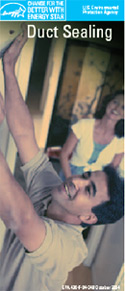Neonode Inc., (Nasdaq:NEON), the optical touch technology company, announced today the release of its new, radically low-cost and groundbreaking Single Side Sensor (SSS), part of Neonode's Multisensing(R) family of touch and proximity solutions.
 |
Touch Enabled Water Dispenser
Photo Credit: Neonode, Inc. |
The Single Side Sensor is developed explicitly to add touch functionality to low-cost, high-volume consumer products. With an unsurpassed ultra-low BOM cost of only $1 (US) in high volumes, it is specifically designed to meet the aggressive price requirements in super cost-sensitive product segments.
This new and inexpensive sensor enables manufacturers to add touch input to a wide range of products, including wearables, low-cost printers, home appliances, toys/games, and gesture sensing mobile phone sleeves & accessories. These products are characterized by a rapid turnover and shorter life cycles.
"This is a dream come true! We can now deliver a BOM level for basic touch solutions we thought to be impossible just 12 months ago. As a technology licensing company we're clearly thrilled about the huge opportunity our innovation brings to manufacturers, who are struggling to add value, differentiate and make ends meet within the fast-growing low-end mass-markets," says Thomas Eriksson, CEO and Co-founder of Neonode.
The new Single Side Sensor integrates Neonode's NN1001 controller, optics and a small PCB, which reside on only one side of a display (or any type of surface). Consequently, this new solution requires substantially less hardware than Neonode's high-end touch solutions, which in turn lowers the Bill of Materials to an absolute minimum. In addition, this new solution can also be used in combination with Neonode's other proven and high-end technologies, for example the recently launched Circular Touch for wearables (
http://bit.ly/13jDoiG).
 |
Touch Enabled Stove
Photo Credit: Neonode, Inc. |
"I am convinced that our Single Side Sensor fulfills the manufacturers needs for compact, cost-efficient and fast time to market touch solutions, and I am happy to say that we covered a milestone in leading the market trend of non-hardware, software-only touch solutions," Eriksson concludes.
Neonode's new Single Side Sensor is built on the company's latest technology and will initially support up to 7-inch displays, with a roadmap to reach larger sizes.
About Neonode
Neonode Inc. (Nasdaq:NEON) develops and licenses the next generation of Multisensing touch technologies, allowing companies to differentiate themselves by making high performing touch solutions at a competitive cost. Neonode is at the forefront of providing unparalleled user experiences that offer significant advantages for OEM's. This includes state-of-the-art touch technology features such as low latency pen or brush sensing, remarkably high speed scanning, proximity-, pressure-, and depth sensing capabilities and object-size measuring.
Neonode's patented Multisensing technology is developed for a wide range of devices such as mobile phones, tablets and e-readers, toys and gaming consoles, printers, white goods, wearable goods and advanced automotive infotainment systems. Neonode, the Neonode logo, Multisensing, and zForce are trademarks of Neonode Inc. registered in the United States and other countries. Liquid Sensing, It Makes Sense and AlwaysON are trademarks of Neonode Inc. For more information please visit
www.neonode.com
Forward-Looking Statements
This press release contains forward-looking statements within the meaning of the Private Securities Litigation Reform Act of 1995. These include, but are not limited to, statements relating to expectations, future performance or future events, and product cost, performance, and functionality matters. These statements are based on current assumptions, expectations and information available to Neonode management and involve a number of known and unknown risks, uncertainties and other factors that may cause Neonode's actual results, levels of activity, performance or achievements to be materially different from any expressed or implied by these forward-looking statements.
These risks, uncertainties, and factors are discussed under "Risk Factors" and elsewhere in Neonode's public filings with the U.S. Securities and Exchange Commission from time to time, including Neonode's annual report on Form 10-K, quarterly reports on Form 10-Q, and current reports on Form 8-K. You are advised to carefully consider these various risks, uncertainties and other factors. Although Neonode management believes that the forward-looking statements contained in this press release are reasonable, it can give no assurance that its expectations will be fulfilled. Forward-looking statements are made as of today's date, and Neonode undertakes no duty to update or revise them.







